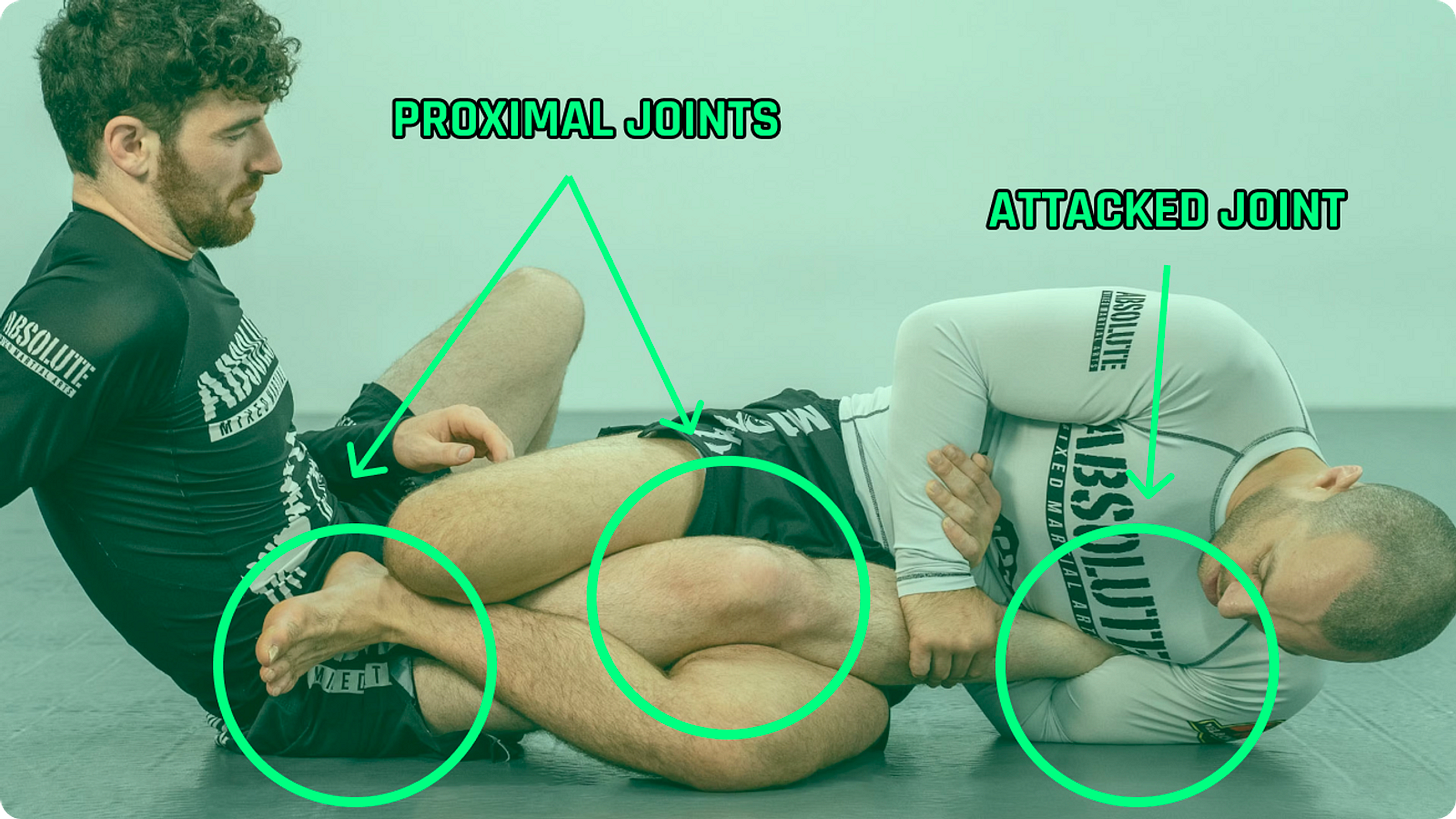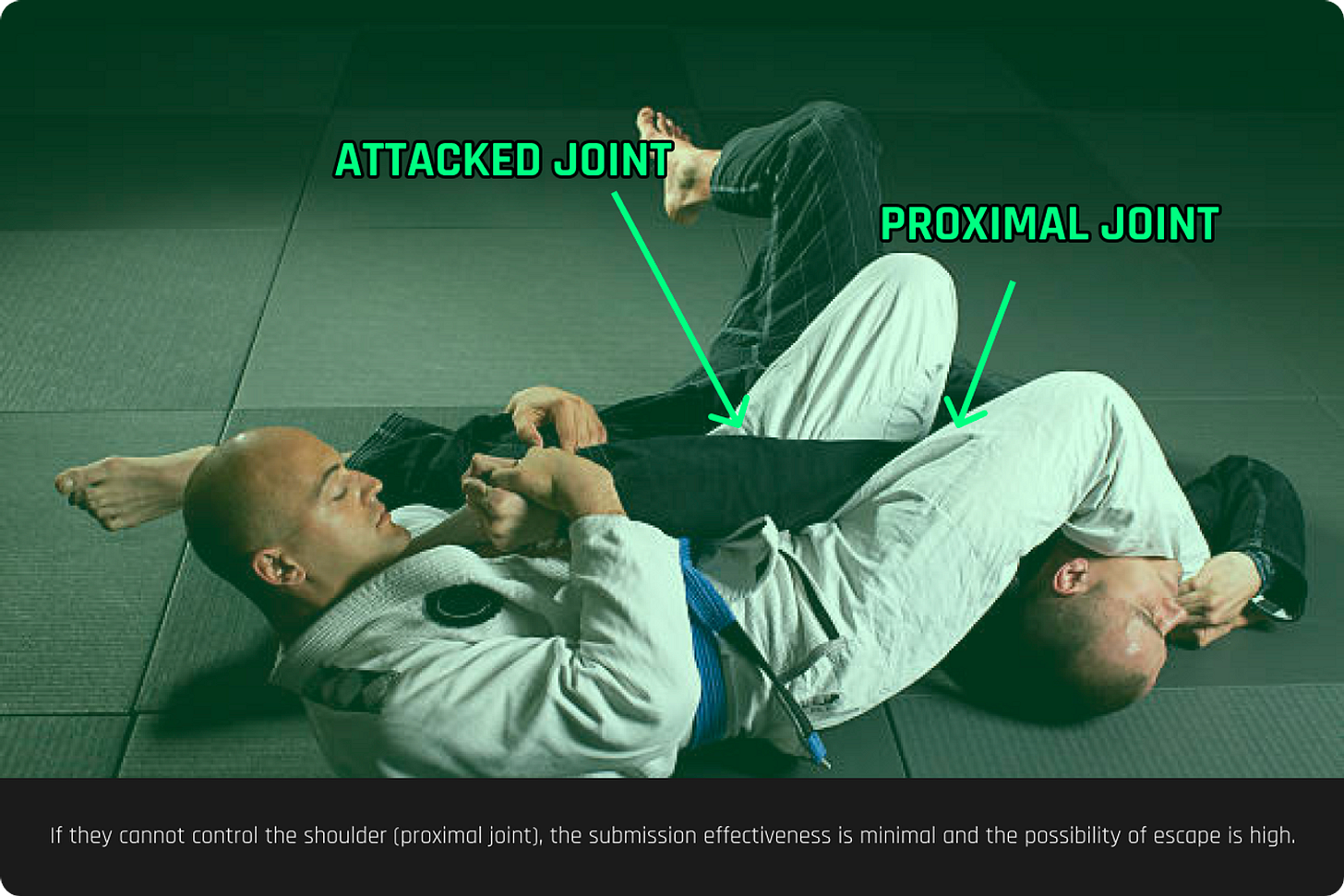How to Defend Every Joint Lock
A conceptual system that works in all cases.
Being safe and feeling safe and out of danger from any position in jiujitsu is probably the most satisfying and freeing thing you can have.
Most people have one or two positions or areas that they know how to defend, but they also have one or two areas and submissions that are their Achilles’ heel.
This conceptual system is nothing new, but framing it as a concept and a system is super beneficial because it gives you a guide on how to approach every joint lock instead of learning specific escapes.
This system only focuses on the underlying principles that EVERY SINGLE escape uses.
You can either learn the specific escapes from every submission, or you can learn the principles that govern them and apply them to every situation. You choose… do you want true BJJ wisdom, or do you want to be a specific move encyclopedia.
An important separation
It was John Danaher, the first person to speak about the separation of control and the action of breaking a limb when he first exposed his leg lock system to the world.
This separation is not only exclusive to modern leg locks. This separation applies to every joint lock. To break an arm with an armbar or a kimura, the attacker needs to have a high degree of control that removes the defender’s ability to move.
Understanding this principle is fundamental to being able to defend joint locks.
Before someone has a joint lock, they need to have some sort of control over you. You need to differentiate control and breaking mechanics in order to know how to defend the submission. If you eliminate their control, you eliminate the threat of submission.
So basically, the System/Concept is this:
For a submission to work, your opponent needs to impart some sort of control over the proximal joints of the attacked joint.
If we already know this, we can ensure we address this control as soon as possible every time.
If you see them get an Achilles grip, make sure your priority isn’t breaking that grip but not letting them control your knee or hips.
If they already have control over the proximal joints, make sure you buy time by addressing the immediate danger. However, understand that eliminating your opponent’s control over the proximal joints is the only way to escape and be safe.
Let’s use the straight ankle lock as an example:
The defender's goal is to always defend the control position instead of getting to the point where you need to defend the specific joint that’s being attacked.
If you see them get an Achilles grip, make sure your priority isn’t breaking that grip but not letting them control your knee or hips.
The focus here, as I said, is to know and defend the proximal joints. If you can prevent them from controlling the proximal joints before they get a joint lock position, better.
If not, the best way to defend the joint lock is, in most cases, still to attack their control of your proximal joints (For example: separate their legs so they cannot control the knee and the hip.)
The proximal joints are the joints that are before of after the joint that’s being attacked; see these examples:
A system that works for every joint lock:
Some common cases:
Ankle Lock: Instead of panicking and focusing our defense on making a stiff boot with your ankle as your only defense (a technique that only works on weaker or low-level people), you make sure you eliminate their control of your knee and hip.
Arm Bar: Instead of focusing solely on not letting them separate your hands or get control of your hands (only a matter of time before they break your grip), focus on not letting them impart control over your shoulder joint.
How to train this?: A Game you can play this week
Get with your partner and let them have a fully locked controlling position. It can be an arm-bar position (spider-web) or an ankle lock position (any Ashi Garami with an Achilles grip.)
Your goal is to escape taking into consideration what we just spoke about. If you need to boot to buy time, that’s perfectly fine, but don’t stay there… but remember, your priority is to eliminate the control they have over the proximal joints (get your knee and hip free)
The person attacking should try to submit (start with less resistance and increase until you are going full blast)
The person defending should try to escape the submission and, most importantly, the position.
If the attacker submits, reset the position and try again.
If the defender escapes, reset the position and try again.
I found a great video of this exact game on Instagram:
Look at it and give them a follow!
Great References to dive deeper:
Priit Mihkelson - Anything related to defense from Priit is GOLD
Chris Paines - Amazing conceptual instruction: This video is great!
That’s it for this week! As always, thanks for reading, and please reach out with any questions or feedback. Oss! 🫱👊
PS.
Please share this with your friends and training partners. It helps me keep going. 😊








